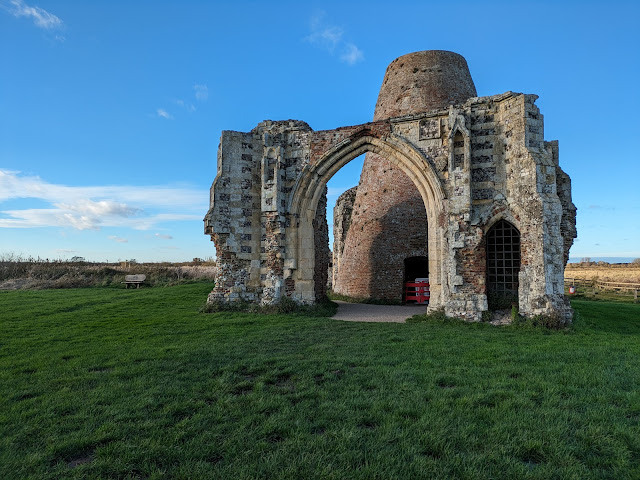Burial Mounds, Churches and Patronage
Eleanor Parker sums up the significance of burial mounds (and supposed burial mounds ) on page 91 of her "Dragon Lords - The History and Legends of Viking England" ( I.R. Tauris 2018. ISBN 978 1 78453 786 9). In Norse literature, they are "the location of encounters with the otherworld, with supernatural beings and with the dead. For Anglo-Saxons, they were seen "as meeting places and as landmarks, as the home of dragons and demons and the site of hidden treasure."
"Dragon Lords" and Austin Mason and Tom Williamson's Ritual Landscape in Pagan and Early Christian England have been in the background of my thinking as I creep towards Walsingham, developing layers of interpretation for the Walsingham Way website.
Making a pilgrim journey at a snails' pace gives time to see what has been under ones nose for ever. Among the things that have caught my eye on the way from Burgh Castle to Norwich, the Norfolk Saints Way and then on to Walsingham, has been the high places and the St. Edmund Churches .
Approaching North Elmham - within sight of the Early Saxon burial grounds at Spong Hill, close to the spot where the Black Water, flowing from St. Withurga's monastery site at Dereham, joins the River Wensum - I visited the Church of St. Margaret's, Worthing.
All Saint's equals Autumn Equinox. A burial mound ? Balder's (the dying/rising god of the Anglo-Saxons) Well (Bawdeswell has an other all Saints' church!) is on the other side of the river!
And as I remember it St. Nicholas Church, Dereham is on a mound above the valley, even though St. Withburga's body (that of the protecting patron) has been translated to Ely.
Am I seeing patterns where there are none? Hmnnnn.....







Comments